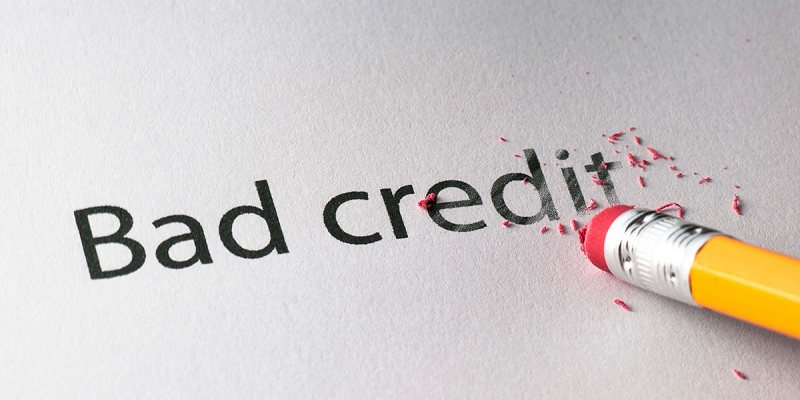 When it comes to applying for a credit card, you shouldn’t feel limited by your credit score. Although it is true those with a poor credit history often gets declined, there are still ways around obtaining a credit card that will fit your financial needs and applicable to your history.
When it comes to applying for a credit card, you shouldn’t feel limited by your credit score. Although it is true those with a poor credit history often gets declined, there are still ways around obtaining a credit card that will fit your financial needs and applicable to your history.
Through secured and subprime credit cards, you can start spending conservatively. Additionally, the options below will help you rebuild your credit history, allowing you access to better credit card choices further down the road!
 |
 |
Effects of Bad Credit
Nowadays, maintaining and knowing your credit score is imperative to any financial and personal investments you choose to conduct. In fact, credit score drops are easier than you might expect. Events such as late payments, choosing partial payments or periods of unemployment can all easily tank a credit score.
Over time if smarter financial choices aren’t applied, obtaining a loan, renting an apartment or even financing a house or car can be quite a difficult task. If your score is too low, lenders won’t know how much of a risk you are. Therefore, the easiest way to prevent that is to start slow and pay your bills on time. Not only is this completely doable, but secure and subprime credit cards can help you more than you think.
What Are Secured Credit Cards?
Secured cards are almost identical to any other credit cards, minus the fact you have you submit a refundable security deposit. The deposit would oftentimes be the same as your credit card limit. The purpose of this is if you go over your limit, the lender may hold your security deposit to cover the debt.
Secured Cards often come with annual fees and high-interest charges. Similar to any other card, you will also receive a monthly statement. However, do note you will have to pay your bill in full each month to prevent high interest on any amount that was carried over. Regardless, your payment history is definitely the most important aspect of your credit scores. I mean, you want to start establishing your credit properly, right?
What Are Subprime Credit Cards?
Subprime differs in that the cards are specifically designed to meet the needs of people with bad credit. The biggest difference is that lenders will impose a more substantial credit card fee. This step adds extra insurance for the lender, knowing their customers have bad credits.
Many subprime cards will have a one-time fee to open an account, along with annual or even monthly fees. If you are asking for a cash advance or utilizing your card outside the country, expect to be hit with a relatively high user fee.
Additionally, Subprime cards present higher interest rates than your standard credit card. Finally, these cards will offer few, if any, travel insurance and purchase protection policies.
How to Improve Your Bad Credit
Two words: Credit Ratio. Your credit utilization ratio will affect your credit score. The credit utilization ratio is the amount of credit you use divided by the amount of credit available. A ratio <30% lets the credit bureaus know you are able to exercise financial restraints. Restraints could mean minimizing your monthly spending and not racking up debts. Because of this, folks with higher credit scores tend to have lower credit utilization ratios.
If you consider your credit score as average and not poor, unsecured cards might be a better choice. However, regardless of your choice, folks with imperfect credits typically have a higher APR.
Again, paying your bill on time every month in full is the easiest way to improve your credit. Although you might not be able to sign up for cards with the best benefits, don’t worry. Building a good credit history takes time. Once your score improves, more options and doors will open your way. However, note that applying for too many cards in a short period of time will also hurt your credit score. So when the time comes, do not get too comfortable with the change and do not get too impatient.
Credit Card Choices
Before applying, think of a few imperative questions. How much are you spending? Will you be able to handle the security deposit? Are the higher rates and consequences worth the risk?
If you answered no to the questions above, then I recommend you save up a little bit more. Consider the pros and cons of both a secured and subprime card. Remember that both cards are designed to help you build your credit. Therefore, if one method proves superior than definitely go with that option.
Lastly, pick a card that will report your information to major credit bureaus such as Experian, TransUnion, and Equifax. Take some time to study where banks such as Discover, Capital One or U.S. Bank pulls from. Bureaus will utilize your record and history to help determine your credit score.
Conclusion
Rebuilding your credit score definitely isn’t the easiest thing. However, with the right precautionary steps, it could be done. Choosing between secured and subprime cards is just one method that could help your credit score. Similar to holding onto the rails when roller skating, you eventually have to learn to go on without them. Although this step might be daunting and require financial sacrifices, it’s worth it in the long run.
Once you re-established your credit score, you will be able to enjoy all the great benefits. Bank rates, investment accounts, and even bank promotions will all be easily accessible to you.



